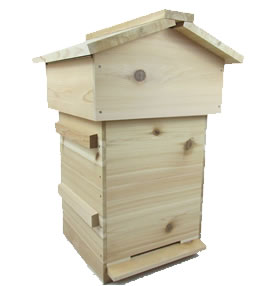Understanding the Beehive: A Comprehensive Guide
A beehive is a structured habitat created by honeybees for their colony's shelter, protection, and sustenance. It serves as the central hub where bees live, work, and carry out essential activities vital for colony survival and growth. Beehives come in various shapes, sizes, and designs, each tailored to the specific needs and preferences of the bee species inhabiting it.
Structure of a Beehive
While the exact structure of a beehive may vary depending on the hive type and design, it typically consists of several key components:
- Bottom Board: The bottom board serves as the foundation of the hive, providing a stable base on which the rest of the hive components are built.
- Hive Boxes: Hive boxes, also known as supers or brood chambers, are stacked vertically to provide living space for the bee colony. They come in different sizes and serve specific functions such as brood rearing, honey storage, and pollen collection.
- Frames: Frames are removable structures within the hive boxes that hold beeswax foundation or comb guides. They provide structural support for the honeycomb and allow beekeepers to easily inspect, manipulate, and extract honey from the hive.
- Honeycomb: Honeycomb is a series of hexagonal cells constructed by bees using beeswax. It serves as storage for honey, pollen, and brood rearing, providing essential nutrients and shelter for the colony.
- Inner Cover: The inner cover is placed above the top box of the hive to regulate temperature and moisture levels within the hive. It helps maintain optimal hive conditions and prevents excessive heat loss or moisture buildup.
- Outer Cover: The outer cover, also known as the hive roof, protects the hive from the elements such as rain, wind, and extreme temperatures. It helps insulate the hive and provides additional protection against pests and predators.
Functions of a Beehive
A beehive serves several essential functions for the bee colony:
- Shelter: The hive provides bees with a secure and protected environment where they can live, work, and raise their brood.
- Food Storage: Honeycomb within the hive serves as storage for honey, pollen, and other food sources essential for the bees' survival.
- Brood Rearing: Bees use the hive's comb to lay eggs and rear their brood, ensuring the growth and development of future generations.
- Communication: Bees use various parts of the hive, such as the waggle dance and pheromone signals, to communicate with each other and coordinate their activities within the colony.
- Temperature Regulation: The hive's design helps regulate temperature and humidity levels, creating an optimal environment for bee activity and brood development.
- Defense: Bees use the hive as a fortress to defend against intruders, such as pests, predators, and rival bee colonies, ensuring the safety and security of the colony.
Types of Beehives
There are several types of beehives used in beekeeping, each with its unique characteristics and benefits:
- Langstroth Hive: The Langstroth hive is a popular hive design characterized by its modular, vertically stacked structure and removable frames.
- Top-Bar Hive: The top-bar hive features bars placed horizontally across the top of the hive, with bees building comb downward from the bars.
- Warre Hive: The Warre hive is a vertical hive design with stacked boxes resembling a traditional beehive.
- Flow Hive: The Flow Hive incorporates a unique honey extraction mechanism, allowing beekeepers to harvest honey directly from the hive without disturbing the bees.
Conclusion
In conclusion, the beehive is a remarkable structure that plays a vital role in the lives of honeybees and beekeepers alike. It serves as a sanctuary, storehouse, and communication center for the bee colony, enabling bees to thrive and fulfill their essential functions within the ecosystem.
Whether used by hobbyists, small-scale beekeepers, or commercial operations, the beehive remains a symbol of the intricate relationship between humans and bees, reflecting centuries of knowledge, innovation, and stewardship in the art and science of beekeeping.



